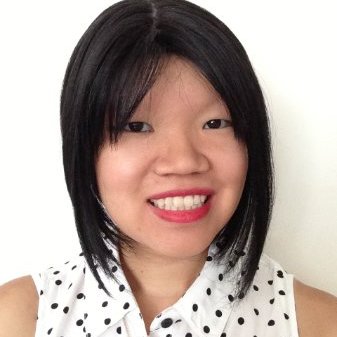Traci Lee is a producer at MSNBC, and was diagnosed with alopecia — a condition that results in hair loss — as a child.
How do you see yourself as a person with alopecia?
I spent a lot of my life avoiding mirrors. When I first began losing my hair at the age of seven, I thought pretending the problem didn’t exist would make it disappear altogether—or, at least, it would slow down the inevitable process of losing everything. As the hair on my head disappeared in patches, so did my eyebrows and eyelashes, and it became too hard to see anything in my reflection except for what was missing.
Having alopecia has been a part of my life for so long that I don’t think I’d know what to do with myself if I suddenly had to worry about getting haircuts and managing split ends. Whether you can call that acceptance is debatable. Most days, I don’t think much about the way I look because putting on and taking off a wig has just become a part of my routine—like putting on shoes or wearing a watch. I’ve become comfortable with the way I look because it’s just how I look, and (as obvious as the lesson has always been given) what really matters is everything on the inside that makes up a person’s identity. I spent the majority of my childhood afraid of how others saw me, and I spend the majority of my adult days now afraid that others will never actually know me. I want to be as loud, as bold, and as daring as a person who spent so much of her early life as a timid girl can be.
How has being an Asian American affected your life as bald, or vice versa?
I never talked about how I looked with my family. If there was a discussion happening about my condition, it happened in hushed whispers. In my family, we didn’t sit down to family meetings and discuss our problems—an experience shared by many of my Asian friends, I learned later on. Instead, in order to try to figure out whether I could fit in anywhere, I turned to the media in the hopes I could find a positive answer.
But growing up as a Chinese American, I didn’t see many faces that looked like mine in magazines or on TV. My concept of “beauty” was defined by what Hollywood wanted everyone to see and also by the dolls I saw on toy store shelves. There weren’t many leading Asian-American characters anywhere and, if there were, they all had long, beautiful strands of hair on their heads. I felt entirely foreign. Not only did I not fit in with the stereotype of what a Chinese girl “should” look like, I didn’t really look how any girl “should” look. I wanted so badly to see someone who looked like me staring back through the pages of a magazine, but the lack of that is no longer a frustrating experience.
Now, I see it as an opportunity to fill a spot at the table that is missing: I don’t look “normal.” I have flaws. I feel self-conscious more often than I know I should. But so do so many others—and we’re all still living, breathing human beings who matter. I don’t think I’m alone in seeking the diversity in beauty I never found as a child. As this new, changing face of Asian America is emerging and breaking the stereotypes that have defined us for so long, it is significant to recognize that I can pick up a pen and redefine how “beautiful” is seen—no matter how much hair I have (or don’t have) on my head.
Contact Info / Shameless Plugs
- Blog (which contains excerpts from a book I’m working on about growing up with alopecia): See Traci Write
- Twitter: @traciglee
- Website/Tumblr: http://traciglee.com
________________
Tune in every day this month for Reappropriate’s daily “Faces of Asian America: Being X” series, which will profile an awesome Asian American in celebration of AAPI Heritage Month.

